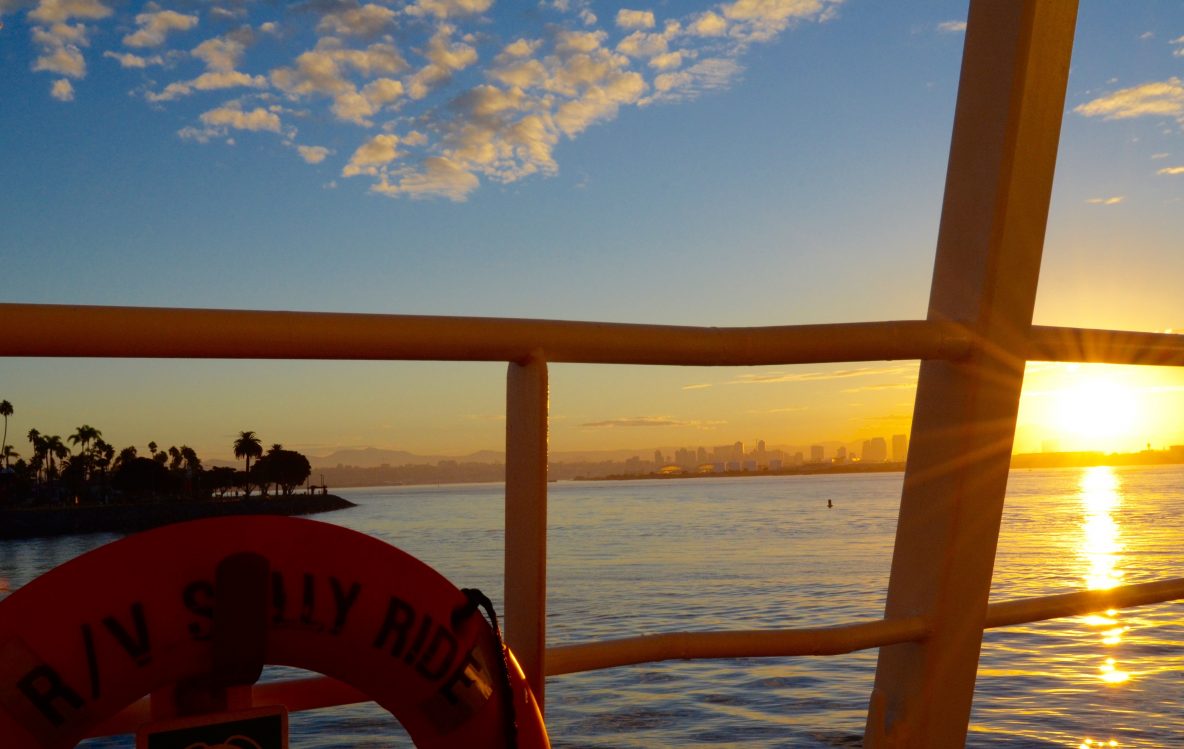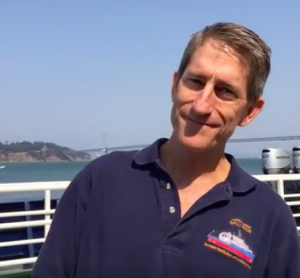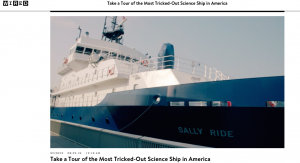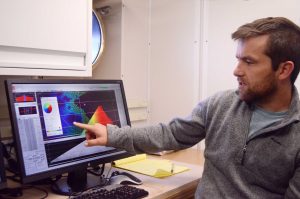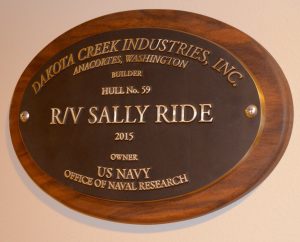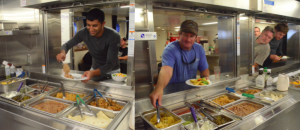Scripps Ships Operations director Bruce Appelgate gave WIRED magazine a tour of the R/V Sally Ride while it was docked in San Francisco. It was done via Facebook Live, so there were a lot of questions asked in the comments. The videos below cover many of them, and more have been covered already in other blog posts, but I’m going to get to some of the others below.
Question from Justin Moss: Top speed?
Answer: 12.8 knots. For sustained speed, 11.5 knots.
Q from Robert Focht: Can it explore to the bottom of the Mariana’s Trench ?
A: A few other questions were asked about the Mariana Trench in particular, which is the deepest part of the ocean at nearly 11,000 meters. The ship itself has to stay on the surface of course, but is capable of carrying instruments to be deployed to the seafloor. Most of the instruments usually used max out at 6,000m so specially designed equipment would be necessary. The multibeam echosounder aboard could be used to map the seafloor even at this depth.
Q from Dion Og: What sort of bottom scanning sonar/em sensors does the ship use?
A: The ship has two Kongsberg multibeam systems, an EM122 deep water system best suited for 1000 meters or more, and the EM712 for shallower water. There are also two Knudsen systems, a single-beam echosounder that operates at 12kHz and a sub-bottom profiler that operates at 3.5kHz.
Q from Myles Blackwood: What type of fuel does that ship use?
A: There are four 12-cylinder diesel engines aboard the Sally Ride. Each one is 1400 brake horsepower and generates 1000kW of power, which is converted to electricity that is used to power the ship’s propulsion, as well as everything else electronic on the ship. Take a 360 degree tour of the engine room here.
Q from Robert Kidwell: Why’s it named after Sally Ride?
A: I think astronauts and oceanographers have a lot in common – both groups of scientists are true explorers, studying the vast unknown in order to better understand how Earth is unique. Dr. Sally Ride was a professor at UC San Diego after retiring from NASA. Once the class of vessel and its sister ship were named after an astronaut, Neil Armstrong, it seemed like the perfect choice. More about the decision and christening of the ship here.
Q from Joaquin Molina: Is this military or a civilian ship?
A: R/V Sally Ride is owned by the U.S. Navy’s Office of Naval Research and operated by Scripps Institution of Oceanography. The crew is made up of civilians, though many of them are veterans of the armed forces. The scientists are also civilians, though may have funding from military projects along with other sources. More about this dynamic here.
Q from Donald Brian Mix: Where was this ship built?
A: Dakota Creek Industries in Anacortes, Washington built both the Sally Ride and her sister ship, the Neil Armstrong. Construction began in 2012, with both ships being christened in 2014 and arriving at their home institutions for the first time in 2016. The ships were built to the same specifications, though now that they’re in the hands of SIO and WHOI, small differences are likely to pop up in terms of instrumentation and equipment onboard.
Q from Judy Cash Lee: What is your next mission?
A: The first official science cruise is coming up in November. It will be the fall CalCOFI cruise, which is made up of scientists from SIO and NOAA. More about their test cruise here. Follow the blog for photos and posts from the upcoming cruise!
Q from Birch Hansen: What is the crew complement of the Sally Ride?
A: The ship has 20 crew members, you can check out more about the current group here. As mentioned in the video, Scripps does strive for a mix of male and female crew members. There aren’t currently any women assigned to the Sally Ride, but there are female crew members on other ships in the SIO fleet.
Q from Jason Vincent: How long can you stay out to sea at one time?
A: The ship can carry 140,000 gallons of fuel, enough for 10,545 nautical miles at 12 knots. The storerooms can hold 40 days of food assuming a full complement of 20 crew and 24 scientists.
And perhaps the most important question, from Oscar Torres Vazquez: Have you eaten tacos on the ship?
A. Yes, I have. Mexican food is an important part of the rotation on the Sally Ride. Being that her home port is San Diego, California, the cooks have access to excellent ingredients. Tacos, burritos, enchiladas, and huevos rancheros are all served aboard the ship on a regular basis.
There are some more questions I will get to next week, so check back!

